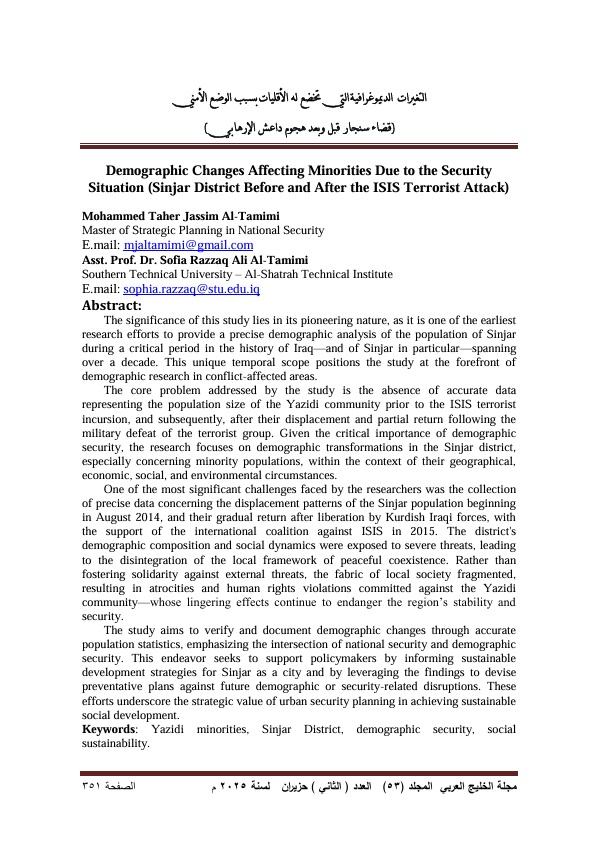Demographic Changes Affecting Minorities Due to the Security Situation (Sinjar District Before and After the ISIS Terrorist Attack)
Keywords:
Yazidi minorities, Sinjar District, demographic security, social sustainability.Abstract
The significance of this study lies in its pioneering nature, as it is one of the earliest research efforts to provide a precise demographic analysis of the population of Sinjar during a critical period in the history of Iraq—and of Sinjar in particular—spanning over a decade. This unique temporal scope positions the study at the forefront of demographic research in conflict-affected areas.
The core problem addressed by the study is the absence of accurate data representing the population size of the Yazidi community prior to the ISIS terrorist incursion, and subsequently, after their displacement and partial return following the military defeat of the terrorist group. Given the critical importance of demographic security, the research focuses on demographic transformations in the Sinjar district, especially concerning minority populations, within the context of their geographical, economic, social, and environmental circumstances.
One of the most significant challenges faced by the researchers was the collection of precise data concerning the displacement patterns of the Sinjar population beginning in August 2014, and their gradual return after liberation by Kurdish Iraqi forces, with the support of the international coalition against ISIS in 2015. The district's demographic composition and social dynamics were exposed to severe threats, leading to the disintegration of the local framework of peaceful coexistence. Rather than fostering solidarity against external threats, the fabric of local society fragmented, resulting in atrocities and human rights violations committed against the Yazidi community—whose lingering effects continue to endanger the region’s stability and security.
The study aims to verify and document demographic changes through accurate population statistics, emphasizing the intersection of national security and demographic security. This endeavor seeks to support policymakers by informing sustainable development strategies for Sinjar as a city and by leveraging the findings to devise preventative plans against future demographic or security-related disruptions. These efforts underscore the strategic value of urban security planning in achieving sustainable social development.




